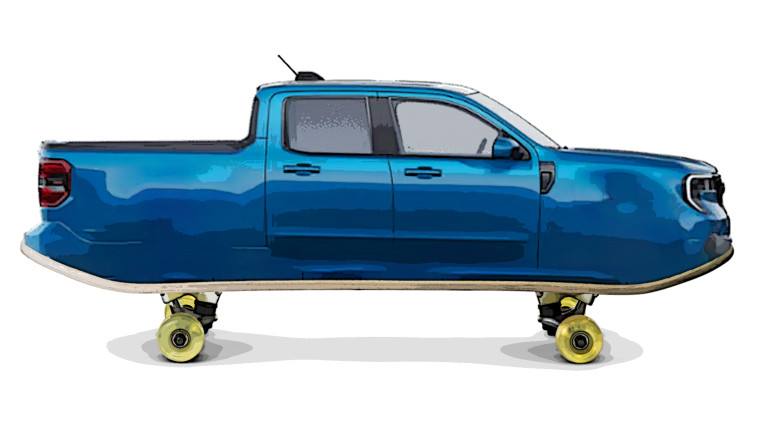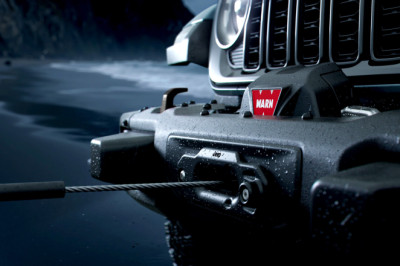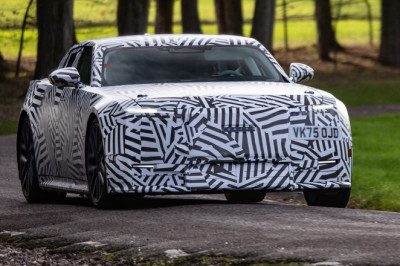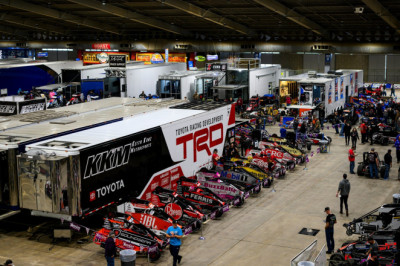
We’re about 15 years into an era of practical electric cars. For much of that time, we’ve been hearing about the potential of the “skateboard” chassis—an EV can be anything, just drop it on top of a structural battery deck. But so far, no automaker has really run with this to efficiently crank out dramatically different cars on one platform. Ford, however, might finally deliver.
This week, Ford shared plans to radically change the way it assembles cars. Not only is the Blue Oval brand planning to expand its EV offerings, but it’s also positioning itself to make them more affordable and diverse. The “$30,000 electric truck” announcement yesterday caught our attention as car enthusiasts, but really, the Ford Universal EV Platform and Ford Universal EV Production System are a much bigger deal for the industry.
By building cars in three parallel processes—the skateboard chassis, the front, and the rear—Ford can theoretically build basically anything from trucks to sedans to sports cars and vans at the same facility, using the same structural belly. The company’s goal is surely to cut production costs and increase margins, but it could also represent a huge opportunity for choice on our consumer end of the deal.
It was a particularly interesting development to learn about yesterday, since it was only about three months ago that Ford reportedly scrapped its next-gen zonal electrical architecture ideas, for ICE cars and EVs, pivoting to cultivating existing systems.
Essentially, the company decided that by integrating some aspects of its canceled FNV4 networked-vehicle plans—like module software and central control—into its existing architecture, Ford figured it could still offer things like over-the-air updates without spending quite as much money as it’d need to build an all-new zonal system from scratch.
I guess a compromise was achieved, because a big bragging point from Ford’s announcement yesterday was about electric architecture commitments. “Take for instance the wiring harness in the new midsize truck; it will be more than 4,000 feet (1.3 kilometers) shorter and 10 kilograms lighter than the one used in our first-gen electric SUV,” proclaims the press release.
If Ford lives up to the Universal EV Production System’s promises, then the Ford Universal EV Platform has a great chance of delivering on the dream of having a super-diverse vehicular lineup on one skateboard. In other words, Ford may have found the optimal zonal architecture solution for legacy automakers.
Now, obviously, platform sharing has been around forever. There are plenty of disparate gas cars based on shared underpinnings. Ford’s not the first to build different EVs on one shared skateboard, either—the Volkswagen Group’s MEB platform is one such example already in production. Volkswagen spent a lot of resources trying to figure out zonal architecture, too, before deciding to just buy it from Rivian.
But that’s not exactly why I think Ford may do this better than VW. Despite regularly leading the industry in recalls, and killing its entire sedan and subcompact lineup, Ford knows how to have fun. Look at how many Raptors there are, Mustang variants like the GTD, funky Tremor trims on work trucks large and small. While Volkswagen is laying one egg-shaped vehicle after another, I’m hopeful that Ford will run a little wilder and squeeze a wider range of vehicle types from its new platform.
And not for nothing, Ford’s had more time to refine its plans and optimize factory efficiency. On a media briefing call yesterday, Ford’s people talked a lot about how much casting tech had improved, giving them the bandwidth to stamp out more body types more quickly.
I haven’t been too optimistic about the future in general lately, but if Ford substantiates its claims of making electric cars affordable and unique within the next few years, I’ll welcome that change to the industry.
Got a tip? Drop us a line at tips@thedrive.com.
Automotive journalist since 2013, Andrew primarily coordinates features, sponsored content, and multi-departmental initiatives at The Drive.














